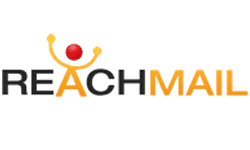In the digital marketing arena, email stands out as a timeless pillar, bridging the gap between brands and their audiences with unparalleled precision and personal touch. Amidst the plethora of tools available, Gist and ReachMail emerge as prominent contenders, each offering unique features and capabilities. But the million-dollar question remains: which one is the right fit for your email marketing needs? Whether you’re just dipping your toes into the vast email marketing ocean or looking to switch gears for a more tailored approach, this guide is crafted to navigate you through the nuances of Gist and ReachMail, helping you make an informed decision tailored to your marketing strategy.
| Gist | ReachMail |
|---|---|
 |  |
| G2 Score – 4.6 out of 5 stars | G2 Score – 4.0 out of 5 stars |
| TrustRadius Score – 9.6/10 | TrustRadius Score – 10/10 |
Ease of Use and User Interface
In the bustling world of email marketing, the ease of use and the intuitiveness of the user interface can significantly impact your daily operations and overall marketing effectiveness. Let’s dive into how Gist and ReachMail compare on these fronts, ensuring your journey is both efficient and enjoyable.
Gist: Simplifying Complexity
Gist stands out with its sleek, user-friendly interface designed to streamline complex marketing campaigns. Catering to both novices and seasoned marketers, Gist’s dashboard offers a clean, intuitive layout that makes navigation a breeze. From crafting your first email to diving into advanced automation workflows, Gist ensures a smooth experience without sacrificing depth or functionality.
The platform shines in its ability to demystify marketing automation, presenting a visual builder that allows users to create sophisticated email sequences with ease. This user-friendly approach extends to its segmentation features, enabling marketers to categorize their audience with simple yet powerful criteria, ensuring messages are as personalized and targeted as possible.
ReachMail: Focused on Efficiency
ReachMail takes a no-frills approach, prioritizing efficiency and straightforwardness in its user interface. Designed with the time-pressed marketer in mind, ReachMail’s platform allows for quick setup of campaigns, with easy access to key features and tools. The emphasis here is on getting your emails out the door quickly, without getting bogged down in complexities.
While ReachMail offers a more streamlined experience, it doesn’t skimp on essential features. Its email editor is robust, offering a variety of templates and customization options to ensure your emails stand out. Additionally, ReachMail provides practical segmentation and automation tools, making it easy to target your campaigns effectively without a steep learning curve.
Automation and Segmentation
Crafting Personalized Campaigns
The power of email marketing significantly amplifies when messages are tailored to the individual needs and behaviors of your audience. Automation and segmentation are the pillars that support this personalized approach, enabling marketers to deliver relevant content to the right people at the right time. Here’s how Gist and ReachMail stack up in enabling such targeted communication.
Gist: A Symphony of Automation and Deep Segmentation
Gist provides a comprehensive suite of automation tools that cater to the intricate needs of modern email marketing strategies. Its platform is designed to understand and react to subscriber behaviors in real time, allowing for the creation of dynamic email sequences that respond to individual actions. This could mean triggering a specific follow-up email when a subscriber downloads a piece of content or customizing messages based on the pages a subscriber has visited on your website. The key here is Gist’s ability to make every subscriber feel like they are receiving a one-on-one conversation with your brand, significantly boosting engagement and conversion rates.
The segmentation capabilities within Gist are equally impressive, providing marketers with the tools to slice their audience into highly targeted segments. This segmentation isn’t just surface level; it dives deep into subscriber data, including past purchase behavior, engagement levels, and even predictive scoring that forecasts future behaviors. This allows for the crafting of emails that are not only personalized but are also highly relevant to where each subscriber is in their customer journey. The depth of segmentation ensures that campaigns are not just personalized but are also timely and contextually relevant, maximizing the impact of every email sent.
ReachMail: Streamlining Campaigns with Efficient Automation
ReachMail approaches automation with a focus on simplicity and effectiveness. It strips down the often overwhelming complexity found in other platforms to deliver a user-friendly experience that still packs a punch. ReachMail’s automation tools are designed to make setting up and executing email sequences straightforward, ensuring that even those new to email marketing can effectively engage their audience. Whether it’s a welcome series, a set of reminder emails, or a sequence to re-engage dormant subscribers, ReachMail ensures that these can be set up with minimal fuss.
Segmentation in ReachMail, while not as deep as Gist’s, still offers a robust way to target your campaigns. The platform allows marketers to segment their audience based on a variety of criteria, such as engagement with previous emails, demographic information, and more. This ensures that even with its streamlined approach, ReachMail users can still send out campaigns that are targeted and tailored to the specific needs and interests of their audience segments. The focus is on delivering efficiency without sacrificing the personalization that is so crucial to successful email marketing.
Analytics and Reporting
Deriving Insights for Optimized Performance
The value of an email marketing tool is not only in its ability to send emails but also in how it reports on those emails’ performance. Analytics and reporting capabilities allow marketers to track key performance indicators, understand what resonates with their audience, and make data-driven decisions to enhance future campaigns. Let’s compare how Gist and ReachMail equip users with the data and insights they need.
Gist: In-depth Analytics for Strategic Decisions
Gist takes analytics beyond the surface level, offering a rich tapestry of data that covers every facet of your email marketing campaigns and how they interplay with other marketing efforts. This comprehensive approach allows marketers to not only measure the success of individual emails but also understand their contribution to the marketing funnel as a whole. With Gist, it’s possible to track a subscriber’s journey from the moment they open an email to their eventual actions on your website, whether it be making a purchase, signing up for a webinar, or downloading a resource. This end-to-end visibility is invaluable for marketers looking to craft campaigns that not only engage but also convert.
The platform’s visual reporting dashboard is a testament to its user-centric design, presenting complex data in a straightforward, digestible format. This ease of access to in-depth insights ensures that marketers can quickly identify trends, pinpoint areas for improvement, and implement changes based on solid data. Furthermore, Gist’s ability to provide granular details on individual subscriber behavior enhances the potential for highly targeted, personalized marketing efforts. Understanding how each subscriber interacts with your content allows for the refinement of segmentation, content, and timing, ensuring that each campaign resonates more deeply with its intended audience.
ReachMail: Streamlined Reporting for Quick Insights
In contrast, ReachMail emphasizes speed and simplicity in its analytics and reporting, catering to marketers who value efficiency and directness. The platform focuses on delivering clear, concise insights that cover the key performance indicators of email marketing, such as open rates, click-through rates, and unsubscribe rates. This streamlined approach is particularly appealing to businesses that require a quick understanding of their campaign’s performance to make agile, informed decisions.
ReachMail’s analytics extend to providing results from A/B testing and link performance, tools that are essential for optimizing email content and structure for better engagement. By highlighting which subject lines, call-to-actions, or content formats perform best, ReachMail enables marketers to refine their approach with each campaign. While it may not delve as deeply into the subscriber’s journey as Gist, ReachMail offers a focused lens on what matters most for immediate campaign performance and engagement.

Related: Check out our free SEO suite

Integration and Scalability
Building a Future-Proof Email Marketing Strategy
In today’s digital marketing landscape, the ability of an email marketing tool to integrate with other software and scale with your business growth is not just beneficial—it’s essential. A platform that seamlessly integrates with your CRM, analytics tools, social media platforms, and other marketing technologies can significantly enhance your marketing efforts. Similarly, scalability ensures that as your business grows, your email marketing tool grows with you, accommodating an increasing number of subscribers and more sophisticated marketing strategies without skipping a beat.
Gist: Seamless Integration with a Focus on Growth
Gist distinguishes itself by offering a wide array of integrations with popular CRM software, social media platforms, analytics tools, and more. This extensive integration capability ensures that marketers can easily connect their email marketing efforts with other parts of their digital marketing ecosystem, creating a cohesive strategy that leverages data and insights from multiple sources. Whether you’re looking to import contacts from your CRM, track email campaign performance alongside website analytics, or automate social media posts based on email interactions, Gist makes it possible.
Moreover, Gist is designed to scale with your business. It offers plans that accommodate a wide range of business sizes, from solopreneurs and small startups to large enterprises. This scalability is reflected not only in the pricing structure but also in the platform’s features, which are designed to support increasingly complex marketing strategies as your business grows. With Gist, businesses can rest assured that their email marketing tool will continue to meet their needs, no matter how ambitious their growth objectives.
ReachMail: Focused Efficiency with Essential Integrations
ReachMail’s approach to integration and scalability is more focused, prioritizing efficiency and the essential tools that small to medium-sized businesses need to execute effective email marketing campaigns. While it may not offer the same breadth of integrations as Gist, ReachMail provides seamless connections with key services that support email marketing, including basic CRM functionality and analytics platforms. This focus ensures that users have access to the tools they need without the complexity that can come with more extensive integration ecosystems.
Scalability is also a strong suit of ReachMail, with a pricing model and feature set that accommodate growing businesses. The platform is designed to efficiently manage larger subscriber lists and more frequent email campaigns as your audience grows, ensuring that businesses can scale their email marketing efforts without encountering significant hurdles.
Pricing
| Gist | Gist offers a range of tools including email marketing, live chat, and marketing automation. Free Plan: Includes basic features with limits on the number of contacts and emails. Professional Plan: Starting at $29/month when billed annually, includes full marketing automation, live chat, and other advanced features. Premium Plan: Custom pricing based on the specific needs of a business, offering additional customization and dedicated support. |
| ReachMail | Pricing is based on the volume of emails sent per month: Plans start from around $10 per month for up to 7,500 emails, with various tiers up to over $70 per month for higher volumes. Features include list management, detailed reporting, and advanced segmentation. Custom enterprise solutions are also available, which include additional features and dedicated support. |
Conclusion
In the dynamic landscape of email marketing, where personalization and efficiency reign supreme, both Gist and ReachMail have carved out their niches, offering distinct advantages tailored to different marketing needs and preferences. As we’ve navigated through the key aspects of automation and segmentation, analytics and reporting, ease of use, and integration and scalability, it’s evident that the choice between Gist and ReachMail hinges on a deeper understanding of your marketing objectives, operational style, and growth ambitions.
Gist emerges as a comprehensive solution for businesses seeking an all-encompassing platform that not only specializes in email marketing but also integrates seamlessly with a broader digital marketing strategy. Its advanced features in automation, deep segmentation capabilities, and in-depth analytics are designed for marketers who require a sophisticated, data-driven approach to crafting personalized, engaging email campaigns. Gist is particularly suited for medium to large businesses or those with complex marketing needs, aiming to leverage email marketing as part of a multi-channel strategy.
On the other hand, ReachMail offers a streamlined, user-friendly platform that prioritizes efficiency and accessibility, making it an attractive option for small businesses, startups, or those new to email marketing. Its straightforward approach to campaign management, coupled with essential automation and segmentation features, provides a solid foundation for businesses looking to engage their audience effectively without the need for extensive technical expertise. ReachMail’s focus on quick insights and essential integrations makes it ideal for marketers who value simplicity and speed in their email marketing efforts.
Read Next:
- Creating a Content Calendar: Organizing for Consistency and Impact
- Influencer Partnerships: Amplifying Your Content’s Reach and Credibility
- The Rise of Voice Search: Adapting Your Content for the New Era
- The Art of Repurposing Content: Maximizing Value and Reach
- Content Marketing for the Healthcare Industry: Best Practices and Tips






















Comments are closed.